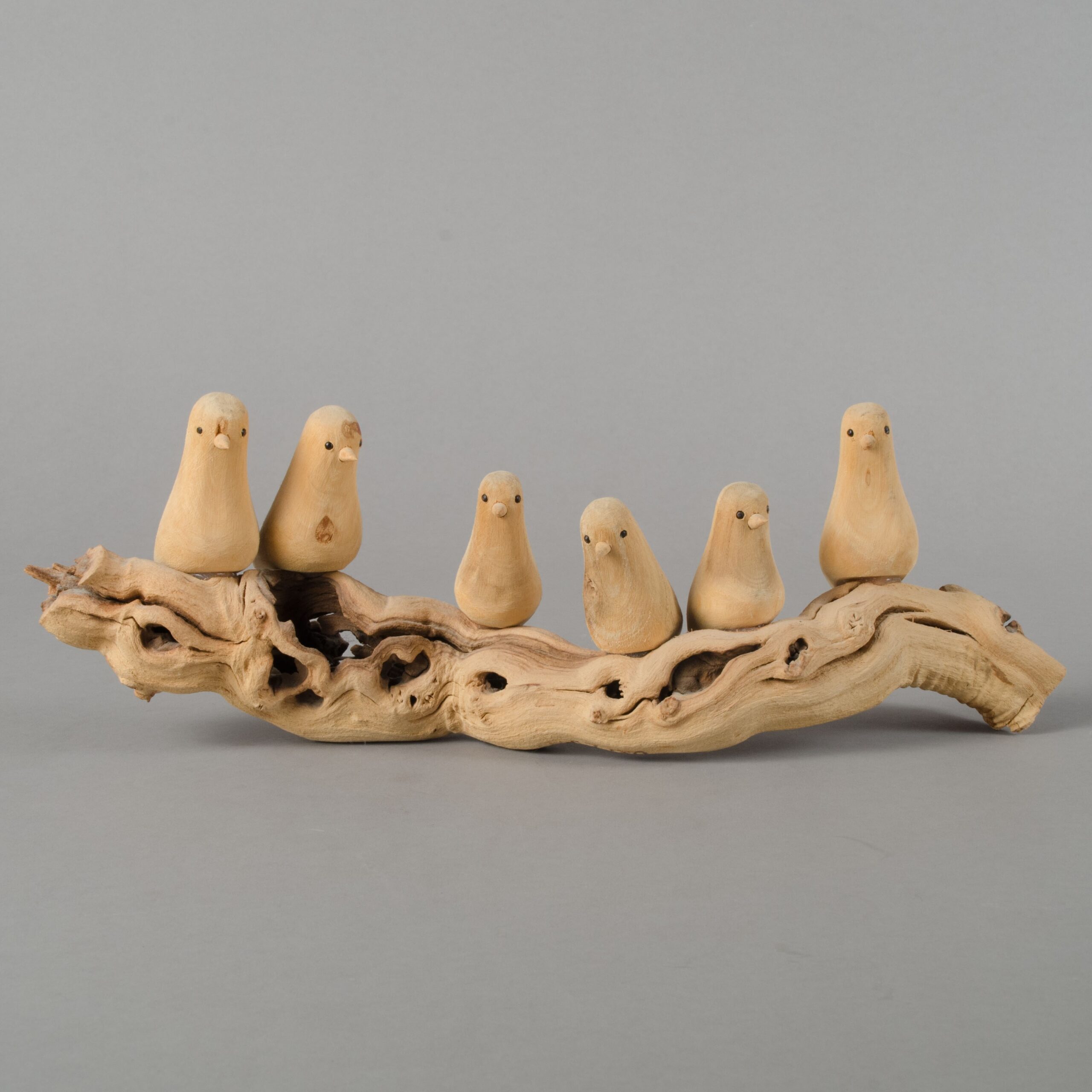Folk Art Favorites: From the Staff
[caption id="attachment_34532" align="alignnone" width="504"] Carved Birds, Ben Ortega; Tesuque, New Mexico Late 20th century. Wood, glue Credit Line: Museum of International Folk Art, Gift of the Friends of Folk Art, A.2016.52.11[/caption]
Carved Birds, Ben Ortega; Tesuque, New Mexico Late 20th century. Wood, glue Credit Line: Museum of International Folk Art, Gift of the Friends of Folk Art, A.2016.52.11[/caption]
For the first time in the Museum of International Folk Art’s 70-year history, the museum staff took on a collaborative role in curating one of its newest exhibitions. The result—Staff Picks: Favorites from the Collection (on view through August 18)—reveals their personal connections, hidden stories and unexpected interpretations of folk art, illuminating the unique expertise and perspectives of those who know the collection best.
Some 34 staff members across six departments and two museum foundations, the International Folk Art Foundation and Museum of New Mexico Foundation, each chose two works and wrote object labels. Their choices highlight works from 26 countries by 38 known artists and other artists once known, including items from the museum’s Girard Foundation Collection, Neutrogena Collection and International Folk Art Foundation Collection.
Works of tramp art, a woodworking style using discarded cigar boxes and fruit crates, drew the attention of Laura Addison, curator of European and American folk art collections. She chose two early 20th-century tables by Henry Patrick Nugent, writing, “These have little apparent utility…rather, they stand as the artist’s bragging rights as an exceptional craftsman.” Security Guard Collin Bertola found echoes of his Catholic upbringing in New Mexico in the details of a late-19th-to-early-20th century crèche.
Others seized on the humor found in many folk art works. Security co-captain Richard "Richie" Lujan chose BoBo bu Ko, artist James Bauer's repurposed lawn chair, which inspired Lujan to imagine, “you had a cold drink and worked on getting your tan.” Guard Fred Salazar found Joe Ortega's carved Alligator With Ice Cream Cone “just fun!," while director of education Leslie Fagre wrote that a Mexican black ceramic deer “made me laugh.”
Michelle Rodriguez, museum cashier, selected a small watercolor from 1950. “When I learned [Georgia O’Keeffe] gifted her dear friend Alexander Girard this piece, I knew it had to be shown,” she wrote. She discovered a more personal link in her second selection, Carved Birds by Ben Ortega. The woodcarver was a childhood neighbor who taught her brother the craft.
Nostalgia also took center stage for Cruz Lujan, security co-captain, who imagined himself back on his grandfather's farm when connecting with a circa 1960 John Deere toy tractor. Ecuadorian artist Gabriel Remo Velez’s Kite resonated with bilingual educator Kemely Gomez. “Kite flying season was my favorite time growing up in Guatemala, she recalled. “My brother and I made our kites using plastic bags like the ones used in…Kite.” And preparator Bryan Johnson-French, who spent a portion of his childhood in Bolivia, selected a Bolivian "Dance of the Devils" mask, writing that “the devil dancers in the Easter celebration, Carnaval de Oruro, were my favorite.”
Other selections express serious concerns. Librarian and archivist Brian Graney tapped a subject of national trauma, 9/11 Altarscreen, a powerful collaboration between santero Roberto Gonzales and silversmith Ralph Sena that speaks of shared grief. Educator Patricia Sigala's selection, an Indigenous Brazilian mask made of feathers, wood, resin and mother-of-pearl, inspired environmental considerations. She wrote, "When you look at this mask, I want you to think about the materials being used, the person or people that made it, and what we may all soon lose.”
A sherbet spoon from the mid-19th-century Ottoman era reminded executive secretary and administrative assistant Xochitl Ehrl “to honor the matriarchs in my family whose spoons fed me delicious dishes and healed me with unpleasant tasting remedies.” And educator Dawn Kaufmann wrote that her choice of a ketubah, a Jewish legal marriage contract protecting a bride’s rights in widowhood and divorce, reflects “a folk-art tradition of over 1,600 years still practiced around the world.”
Laurel Seth, executive director of the International Folk Art Foundation, which provided financial support for the exhibition, also weighed in. She recounted the fascinating journey of the Kashmiri-style sitar she chose for display, writing, “In 1967, with a grant from the foundation, Richard Alpert traveled to India where he purchased musical instruments for the [museum] collection. When he returned [it was] as the spiritual teacher Ram Das.”
Staff Picks was also supported by Friends of Folk Art as well as individual donors via the Museum of New Mexico Foundation.
This article and image are from the Museum of New Mexico Foundation’s Member News Magazine.


Connect